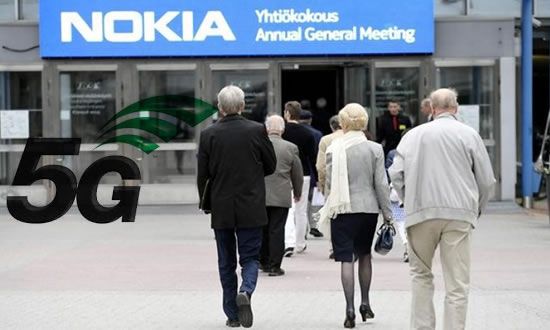Nokia has unveiled its new ReefShark chipsets, aimed at providing big performance gains in 5G network with a small size, cost and power consumption. The company also outlined the scope of its Future X architecture for 5G, the basis for its new reference silicon design and foundation of its 5G technology and services portfolio, to be showcased at the Mobile World Congress in Barcelona next month.
Giant mobile phone maker’s innovation promises to cut antenna size in half, triple data-handling capacity and cut the power consumption of mobile towers, the company said on Monday. The chipsets, known as ReefShark, are expected to ship in volume during the third quarter of 2018 and can be inserted into Nokia’s existing AirScale family of 4G and 5G-ready network gear, the world’s No.2 maker of mobile network gear said.
Nokia said it is working with 30 mobile operators to deploy the new chipsets into their wireless towers, meaning that the first networks could be upgraded later this year, with mass-market deployments to follow as 5G-ready devices hit the market.
ReefShark chipsets are designed to work in so-called Massive MIMO antennas that are able to send and receive dozens of separate streams of data, offering many times more network capacity and greater wireless coverage from a single cell tower.
The chipsets will allow the size of antennas, on average, to be cut in half to as small as 45 centimetres (18 inches) tall from existing antennas that currently range in size from 1 metre (3.3 ft) to 2.6 metres tall, enabling them to be installed in far more locations.
Nokia confirmed the planned launch through its twitter handle. @nokia said on Monday that, “ Our ReefShark chipsets leverage in-house silicon expertise to dramatically reduce the size, cost and power consumption of operators’ networks and meet the massive compute and radio requirements of #5G.
5G is the next generation of technology that will revolutionize how we live, work, play and relate to each other. It will provide massive connectivity to billions of things, forming a global nervous system network.
“But to deliver 5G, fundamental changes to network architecture will be needed. The network requires cloud capabilities for a more agile and distributed core architecture, to provide the necessary flexibility, scalability, programmability and automation.”




















)